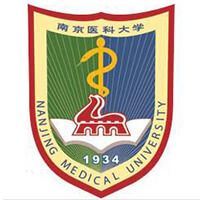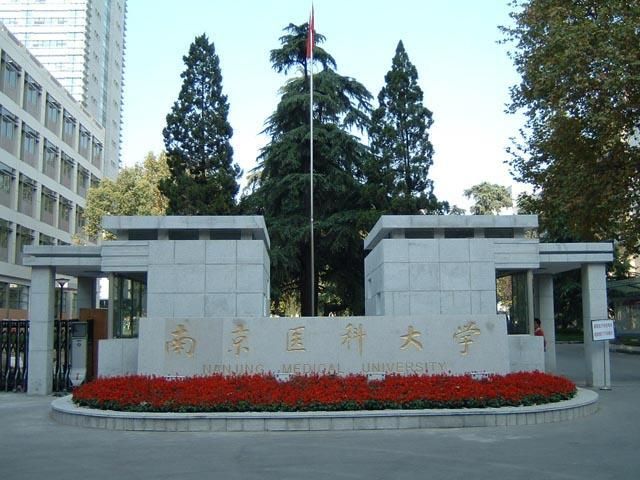
- EN
- 中文
School of Optometry

School emblem
·Nanjing Medical University
Nanjing Medical University was founded in 1934, when it was named Jiangsu Provincial College of Medical Administration. In 1957, he moved from Zhenjiang to Nanjing and was renamed Nanjing Medical College. In 1962, it was listed as the first batch of six-year medical colleges in the country. In 1981, it was approved as the first batch of doctoral and master degree granting units in the country. In 1993, it was renamed Nanjing Medical University. The school is a key construction university in Jiangsu Province. In September 2015, it was approved to be the first batch of medical schools jointly established by the Ministry of Education, the National Health and Family Planning Commission and the provincial government.
The school has 19 colleges (departments) and an independent college-Kangda College. It has 23 affiliated hospitals and more than 50 teaching hospitals. The school currently has more than 1,700 faculty members, including 884 full-time teachers. There are 212 professors, 303 associate professors, 730 doctoral supervisors, and 2405 master supervisors (including affiliated hospitals). The school currently has 1 academician of the Chinese Academy of Engineering, 1 foreign academician of the National Academy of Medicine in the United States, 3 "Changjiang Scholars" distinguished professors, 2 "Changjiang Scholars Award Program" young scholars, and national "Ten Thousand Talents Program" tens of millions of project leaders 1 person, 3 national "Ten Thousand Talents Program" scientific and technological innovation leaders, 2 national "Ten Thousand Talents Program" young top-notch talents, 7 national talents in the National Ten Thousand Thousand Talents Project, 9 winners of the National Science Fund for Distinguished Young Scholars, Excellent Youth Fund There are 12 winners, 1 national-level teaching teacher, 1 national excellent teacher, 32 special-appointed professors in Jiangsu Province, 3 "national teaching teams", and 1 "innovation team" from the Ministry of Education.
The school has 8 first-level discipline doctorate authorization points (biology, basic medicine, clinical medicine, stomatology, public health and preventive medicine, pharmacy, special medicine, nursing), 54 second-level discipline doctorate authorization points, 3 2 interdisciplinary doctoral degree authorization points (clinical medical engineering, humanities medicine, health policy management); 12 first-level discipline master degree authorization points, 67 second-level discipline master degree authorization points; 7 post-doctoral research mobile stations, degree authorization points Covers 7 disciplines including medicine, science, engineering, management, law, education and literature; 3 national key disciplines, 1 national key cultivation discipline, 28 national clinical key specialties, and 2 Jiangsu Province first-level disciplines Disciplinary key disciplines, 3 key disciplines for first-level disciplines in Jiangsu Province. In the fourth round of national subject evaluation, our school’s public health and preventive medicine was rated A+ among 54 participating universities across the country. Seven disciplines including clinical medicine, molecular biology and genetics, biology and biochemistry, neuroscience and behavior, pharmacology and toxicology, immunology, and social science have entered the top 1% of ESI's global ranking. Basic medicine, clinical medicine, stomatology, public health and preventive medicine, pharmacy, and nursing are the dominant disciplines of universities in Jiangsu Province.
The school has 26 undergraduate majors and 3 "5+3" integrated majors. At present, the total number of students at the school is more than 17,000, and an all-round and multi-level education system has been formed from undergraduates, graduates to post-doctoral students, from full-time to adult education, and international student education.
The school has 1 national key laboratory, 1 national-level international joint research center, 4 ministerial-level key laboratories, 20 provincial-level key laboratories (engineering centers), and 2 provincial-level collaborative innovation centers. It has a domestic first-class medical simulation education center (MSC) and an independent learning center, as well as a well-known domestic and provincial first-class medical animal experiment base in Jiangsu Province. It has established the only provincial health policy think tank in Jiangsu Province and the only one in the province. Translational Medicine Research Institute Jiangsu Institute of Translational Medicine.
Since the "Twelfth Five-Year Plan", the school's scientific research level has been continuously improved, and it has obtained nearly 100 national major scientific research projects such as national key research and development plan projects (projects), national natural science fund key and major projects, and innovative research group projects. He has won 4 national achievement awards including the National Natural Science Award, and published 9236 SCI papers. The number of papers and their impact factors have both increased significantly. In 2018, our school received 291 projects from the National Natural Science Foundation of China, and the number of projects ranked first among independent medical universities. It has been rated as "Advanced University of Science and Technology in Jiangsu Province" for many years.
The school has now established 5 national-level quality courses, 4 national-level quality resource sharing courses, 5 national-level characteristic majors, 5 provincial-level characteristic majors, 4 provincial-level brand majors, and 2 national-level bilingual teaching demonstration courses ; 2 national-level experimental teaching demonstration centers, 1 national-level virtual simulation experiment teaching center, 12 provincial-level experimental teaching demonstration centers, 19 university teaching laboratories jointly built by the central and local governments, and 1 national-level talent training Model innovation test zone. Editor-in-chief of 6 national "Twelfth Five-Year" planning textbooks. The school has passed the clinical medicine certification of the Ministry of Education and has the longest certification period of 8 years. The school’s enrollment and employment work has been praised by all sectors of the society, and the employment rate has always remained above 95%, and has been rated as "Advanced Collective for Graduate Employment in Jiangsu Province" many times.
The school has Jiangning campus, Wutai campus and Kangda College Lianyungang campus. Jiangning Campus is located in the University Town of Jiangning District, Nanjing, covering an area of 1,300 acres. It is an administrative, teaching and research center. Wutai Campus is located at the southern foot of Wutai Mountain in Gulou District, Nanjing. It covers an area of 120 acres and is a clinical teaching and research center. The school's collection of books and documents is rich, with more than 10 million Chinese (foreign) paper books, e-books, and full-text e-journals. It is the Medical Library of Jiangsu Province and the Medical Literature Center of the University Literature Guarantee System. The school sponsors 11 academic journals.
In recent years, the school has extensively carried out foreign exchange activities, and actively established various forms of contacts and cooperation with domestic and foreign universities. The school has established bilateral cooperation and academic exchanges with medical schools or scientific research institutions in the United States, Canada, Australia, Sweden, Japan, Taiwan, Hong Kong and other countries and regions. The school resumed enrollment of international students and students from Hong Kong, Macau and Taiwan in 2002. There are currently more than 800 international students and students from Hong Kong, Macau and Taiwan.
Entering the "Thirteenth Five-Year Plan", the entire school's teachers, students, and medical staff will work together, make overall plans, pioneer and innovate, and reform to tackle tough issues, and fully implement the "Thirteenth Five-Year Plan" development plan, and strive to build the school into an internationally renowned high-level research with distinctive characteristics Type medical university.
The campus environment
